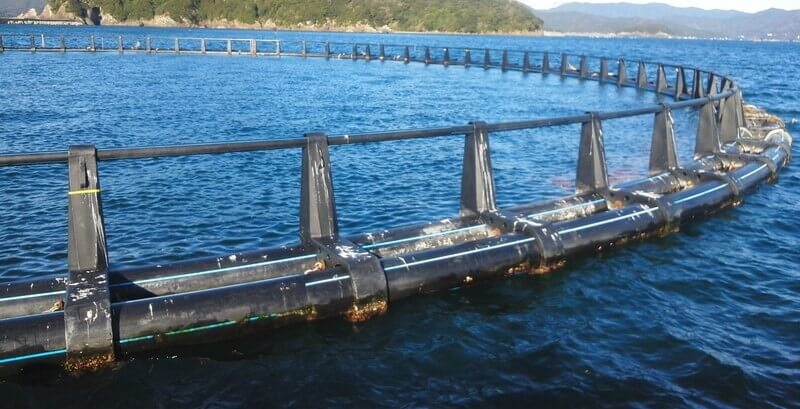 While high-quality tuna toro used to be unattainable for normal people, it’s now become a much more affordable item. This is thanks to fish fattening (畜養) practices of the southern bluefin tuna, which is equivalent in quality to the Pacific bluefin tuna. The fattening method of catching young southern bluefin tuna in roll nets or something similar, and then keeping them in fish preserves until they grow big enough was developed in the 1990s in Australia.
While high-quality tuna toro used to be unattainable for normal people, it’s now become a much more affordable item. This is thanks to fish fattening (畜養) practices of the southern bluefin tuna, which is equivalent in quality to the Pacific bluefin tuna. The fattening method of catching young southern bluefin tuna in roll nets or something similar, and then keeping them in fish preserves until they grow big enough was developed in the 1990s in Australia.
There have been changes in the Pacific bluefin tuna as well. In the late 1990s, the southern bluefin tuna fish fattening method started to be used in the seas throughout the world, and this led to the fattening of the Pacific bluefin tuna, which became all the rage. Most of these are exported to Japan, and account for about half of the consumption of southern bluefin tuna and Pacific bluefin tuna in Japan.
As a bonus, tuna that has been fattened in this way has such a high volume of fat that it is said to be “all toro”, and it’s taken the Japan high-grade toro market by storm. Also, both southern bluefin tuna and Pacific bluefin tuna are served at kaiten-zushi (conveyor belt sushi) restaurants.
The fattening of Pacific bluefin tuna started on the east coast of Canada in the mid-seventies. In the summer, large volumes of Pacific bluefin tuna are caught in the fixed shore nets on the Atlantic seaboard, and since they have already spawned, they have slimmed down and aren’t worth much commercially. These fish are fed and fattened, and a new route to Japan has been developed, giving the fish new commercial value.
Both fish fattening and fish farming (養殖) mean to hold fish in fish preserves, but the purpose differs between the two. The purpose of fish fattening is an adjustment for fishing while the purpose of fish farming is to grow fish to a certain size. Therefore, in fish fattening, they are not fed food to promote growth, but they are in fish farming. However, even in fish fattening, if the period of time they are held for shipping adjustment stretches out too long, they are fed in order to prevent a decrease in meat quality and cannibalism. This can blur the line between fish fattening and fish farming quite a bit.
The Pacific bluefin tuna fish fattening started in Canada is similarly vague. In that case, the purpose was fattening, so it may be fair to call it fish farming. However, shipping adjustment was also one of the major objectives. What about the fish fattening of southern bluefin tuna and Pacific bluefin tuna in Australia and the Mediterranean Sea? These are in place clearly for the purpose of growing small fish, so we can call them fish farming.
In the Mediterranean, where resources are already declining, methods are used to catch natural tuna alive. The only mobile fishing gear that can catch tuna alive is purse seine nets.
The period when tuna are transported to the fattening farms is generally from May or June to July or September, but this varies depending on the country. They are then transferred to cages, where they are fattened for a relatively short period to meet Japanese market standards. The fattening period is usually six to seven months, because demand in the Japanese market peaks at the end of the year. In Croatia, the size of tuna transferred to cages is small, so the fattening period can be as long as 20 months.
Mediterranean coastal countries involved in tuna fattening include Algeria, Croatia, Cyprus, Greece, Libya, Malta, Spain, Tunisia, and Turkey. French tuna purse seine fishing fleets are the largest suppliers of live tuna to fattening farms in Mediterranean coastal countries.
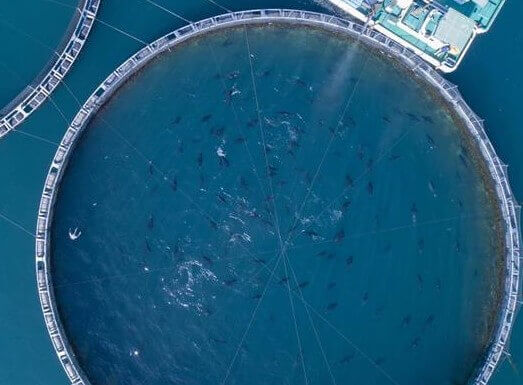 The Kindai University Aquaculture Research Institute has succeeded in a complete farming process of taking eggs from spawning Pacific bluefin tuna, incubating them and raising adult fish. Research for a complete farming process began around 1970, so it has taken 30 years for success. These fully farmed tuna are also raised in fish preserves and fed small fish like sardines as well as artificial feed for fattening, resulting in all-toro tuna. However, even though the Kindai University tuna have been featured by the media, you never see them in the supermarket. Why is that? Even though the university has succeeded in a mass-production method, the absolute quantity is extremely low even though raising the fish takes a lot of time and effort, so the price is extremely high.
The Kindai University Aquaculture Research Institute has succeeded in a complete farming process of taking eggs from spawning Pacific bluefin tuna, incubating them and raising adult fish. Research for a complete farming process began around 1970, so it has taken 30 years for success. These fully farmed tuna are also raised in fish preserves and fed small fish like sardines as well as artificial feed for fattening, resulting in all-toro tuna. However, even though the Kindai University tuna have been featured by the media, you never see them in the supermarket. Why is that? Even though the university has succeeded in a mass-production method, the absolute quantity is extremely low even though raising the fish takes a lot of time and effort, so the price is extremely high.
Whether they are fattened, farmed, or fished in the wild, consumers always welcome delicious, high-quality toro at a reasonable price.
We hope this information will be helpful.

Revision date: May 28, 2025
Share this article
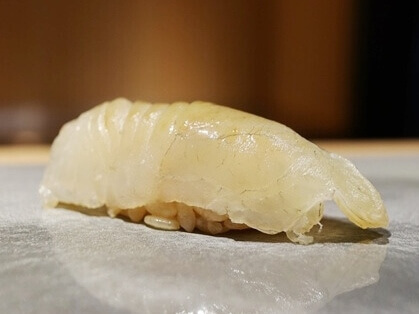 In the case of Sushi, a representative of Japanese cuisine, the decisive point is to prepare the fish in a way that removes the fishy odor characteristic of Japanese sea bass. At the same time, the finished piece should be a simple dish that can be enjoyed with only a minimal amount of nikiri soy sauce and wasabi, so as not to override the natural refreshing flavor and umami of the fish. It should let the customer imagine sea bass swimming in the summer sea. And yet, the deep flavor required for the dish is successfully brought out using only a balanced combination of vinegar rice, the topping, wasabi and soy sauce. The method is really just to take out the excessive elements of the dish.
In the case of Sushi, a representative of Japanese cuisine, the decisive point is to prepare the fish in a way that removes the fishy odor characteristic of Japanese sea bass. At the same time, the finished piece should be a simple dish that can be enjoyed with only a minimal amount of nikiri soy sauce and wasabi, so as not to override the natural refreshing flavor and umami of the fish. It should let the customer imagine sea bass swimming in the summer sea. And yet, the deep flavor required for the dish is successfully brought out using only a balanced combination of vinegar rice, the topping, wasabi and soy sauce. The method is really just to take out the excessive elements of the dish.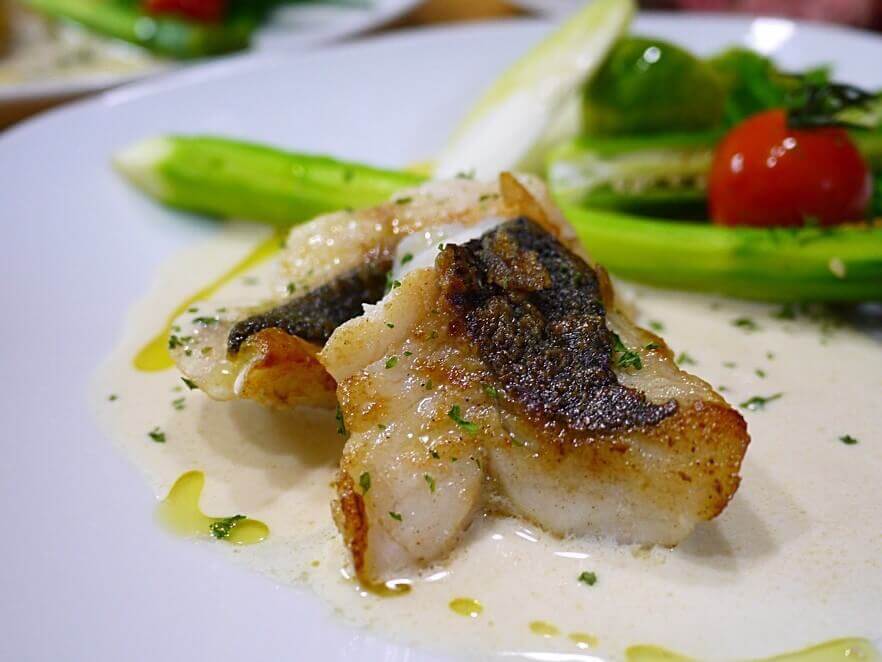 Meanwhile, the method for making sea bass dishes in French cuisine, representative of western cooking, includes seasoning the fish with salt and pepper and saute in butter, then adding rich, creamy sauce as well as other things like herbs, caviar, black truffles, etc., creating a dish that allows enjoyment of multilayered flavor. This sort of dish beautifully makes up for the flavors that the light, white fish lacks and portrays a flavor with depth through the finished plate over the individual flavor of the sea bass. In this cuisine, it can be said that the cooking method is more important than the raw ingredients. It can be thought of as cuisine that adds many ingredients.
Meanwhile, the method for making sea bass dishes in French cuisine, representative of western cooking, includes seasoning the fish with salt and pepper and saute in butter, then adding rich, creamy sauce as well as other things like herbs, caviar, black truffles, etc., creating a dish that allows enjoyment of multilayered flavor. This sort of dish beautifully makes up for the flavors that the light, white fish lacks and portrays a flavor with depth through the finished plate over the individual flavor of the sea bass. In this cuisine, it can be said that the cooking method is more important than the raw ingredients. It can be thought of as cuisine that adds many ingredients.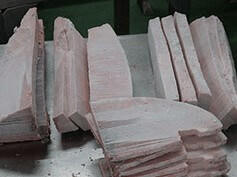 In order to maintain the quality of tuna, when it is caught in the sea, the ikejime technique is used first, then rapid freezing is used as a matter of course. This means that the quality of the thawing technique is also important. Poor thawing conditions mean that the drip outflow volume will be too high, shrinking the meat and worsening the texture. Here I will explain a thawing method that doesn’t cause drip, uneven thawing, or loss of color.
In order to maintain the quality of tuna, when it is caught in the sea, the ikejime technique is used first, then rapid freezing is used as a matter of course. This means that the quality of the thawing technique is also important. Poor thawing conditions mean that the drip outflow volume will be too high, shrinking the meat and worsening the texture. Here I will explain a thawing method that doesn’t cause drip, uneven thawing, or loss of color. I’m sure you’ve seen it before in any type of thawing frozen meat, but there is a red liquid that comes out of the tuna when thawing. This is called ‘drip’. This liquid includes the tuna’s umami, and when the fish loses a lot, it naturally detracts from the flavor.
I’m sure you’ve seen it before in any type of thawing frozen meat, but there is a red liquid that comes out of the tuna when thawing. This is called ‘drip’. This liquid includes the tuna’s umami, and when the fish loses a lot, it naturally detracts from the flavor.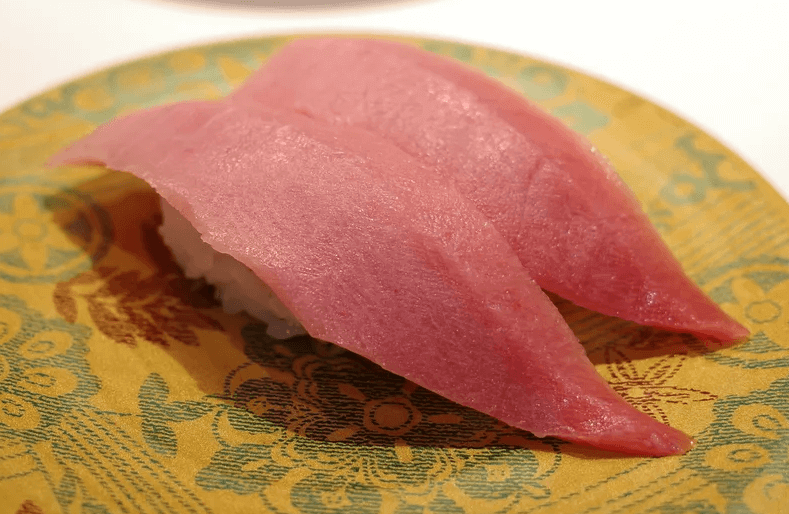 There is only one trick to distinguishing between conveyor belt sushi restaurants (kaiten-zushi), and that is to try eating the tuna as your first dish.
There is only one trick to distinguishing between conveyor belt sushi restaurants (kaiten-zushi), and that is to try eating the tuna as your first dish.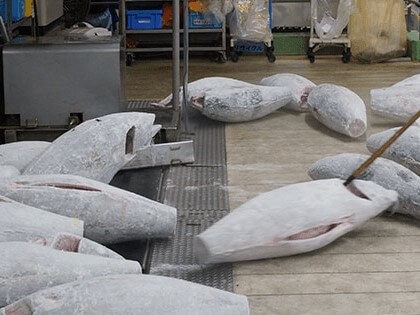 The most commonly used ingredient at kaiten-zushi is tuna. At kaiten-zushi, the tuna is imported and frozen nearly 100% of the time. The most famous is the Southern blue-fin tun, but you’ll also find Boston bluefin tuna, Canadian tuna farmed in fish preserves, inland sea tuna from Turkey and Spain, New Zealand offshore tuna, Atlantic tuna, etc. Also, the season of each type of tuna and the timing of high-volume catch differ, which makes the prices fluctuate greatly.
The most commonly used ingredient at kaiten-zushi is tuna. At kaiten-zushi, the tuna is imported and frozen nearly 100% of the time. The most famous is the Southern blue-fin tun, but you’ll also find Boston bluefin tuna, Canadian tuna farmed in fish preserves, inland sea tuna from Turkey and Spain, New Zealand offshore tuna, Atlantic tuna, etc. Also, the season of each type of tuna and the timing of high-volume catch differ, which makes the prices fluctuate greatly.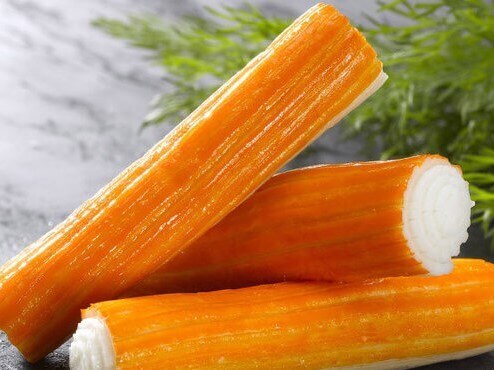 It seems kanikama was invented in Japan. In the early 1970s, Sugiyo, a fish paste manufacturer, in a failed attempt to developed artificial jellyfish, ended up with a product that had a texture exactly like crab and shifted development to that instead.
It seems kanikama was invented in Japan. In the early 1970s, Sugiyo, a fish paste manufacturer, in a failed attempt to developed artificial jellyfish, ended up with a product that had a texture exactly like crab and shifted development to that instead.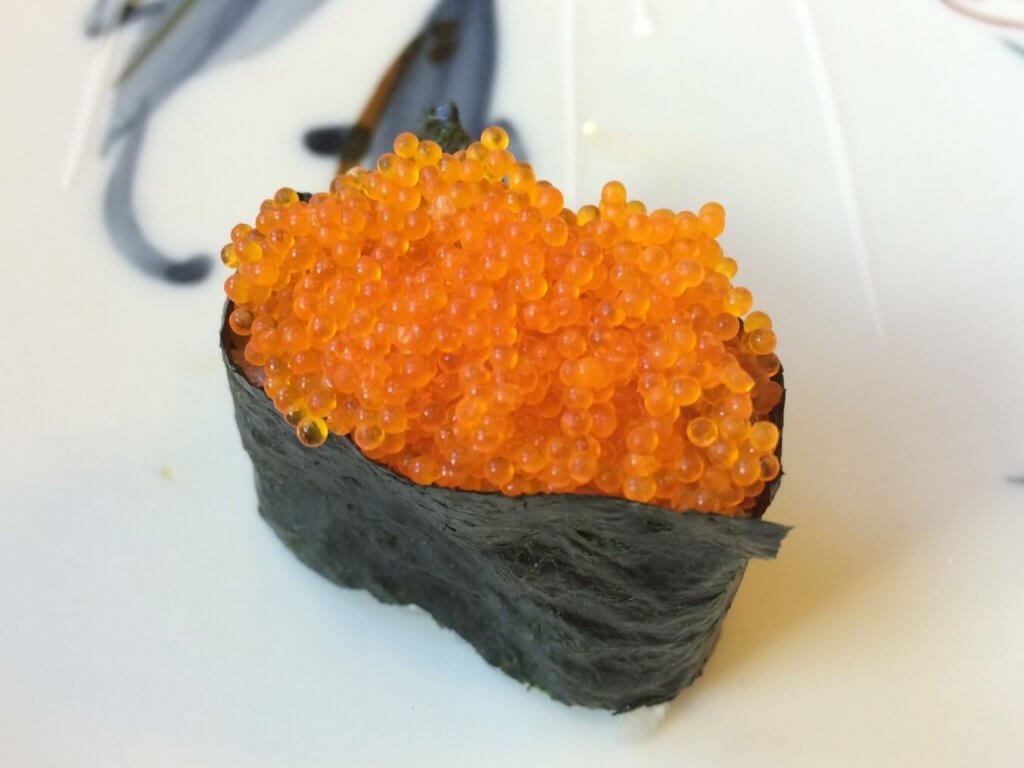 The tiny red balls around the outside of the rice on California rolls are Tobiko (飛び子). Specifically, they have salted roe of flying fish and are known for the plump, crunchy texture. This crunchy texture comes from the skin, which is relatively tough, even compared to other fish eggs. As the roe is made up of small eggs of only 1 to 2 mm, each one bursts as you bite, without leaving the outer skin in your mouth, so you can enjoy a nice texture that you won’t find with any other fish roe. Unlike the orange-colored tobiko sold in stores, natural tobiko has a pale golden color with a sense of transparency. Therefore, some processors have dubbed it “golden caviar”.
The tiny red balls around the outside of the rice on California rolls are Tobiko (飛び子). Specifically, they have salted roe of flying fish and are known for the plump, crunchy texture. This crunchy texture comes from the skin, which is relatively tough, even compared to other fish eggs. As the roe is made up of small eggs of only 1 to 2 mm, each one bursts as you bite, without leaving the outer skin in your mouth, so you can enjoy a nice texture that you won’t find with any other fish roe. Unlike the orange-colored tobiko sold in stores, natural tobiko has a pale golden color with a sense of transparency. Therefore, some processors have dubbed it “golden caviar”.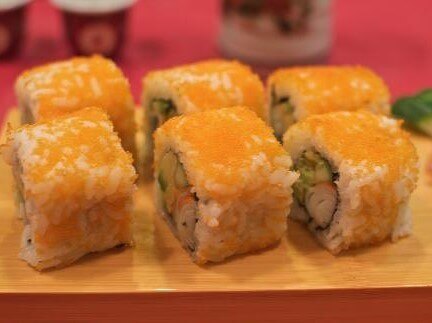 On the other hand, an orange-colored tobiko is often seen at conveyor belt sushi restaurants, etc., but this is the roe of a fish called capelin (カペリン), which is similar to shishamo smelt. A salted version of this is used for sushi rolls in the US and other places, where it is called masago. Compared to tobiko, the grains are smaller and the texture is a bit chewier. It is mainly rich in EPA (Omega-3 fatty acids) and collagen.
On the other hand, an orange-colored tobiko is often seen at conveyor belt sushi restaurants, etc., but this is the roe of a fish called capelin (カペリン), which is similar to shishamo smelt. A salted version of this is used for sushi rolls in the US and other places, where it is called masago. Compared to tobiko, the grains are smaller and the texture is a bit chewier. It is mainly rich in EPA (Omega-3 fatty acids) and collagen.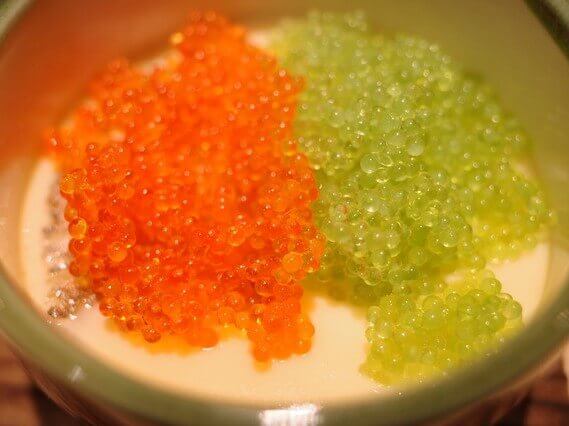 Finally, we’ll let you in on a not-so-pleasant secret. Flying fish and capelin roe is actually a light yellow or beige color. However, you’ll find it in bright red, orange, yellow and lately even green or black. Of course, these are colored by either natural pigments or synthetic coloring. Furthermore, tobiko is sometimes mixed with the cheaper capelin or herring roe. Unfortunately, food fraud is common in seafood products that are consumed in high quantities.
Finally, we’ll let you in on a not-so-pleasant secret. Flying fish and capelin roe is actually a light yellow or beige color. However, you’ll find it in bright red, orange, yellow and lately even green or black. Of course, these are colored by either natural pigments or synthetic coloring. Furthermore, tobiko is sometimes mixed with the cheaper capelin or herring roe. Unfortunately, food fraud is common in seafood products that are consumed in high quantities.
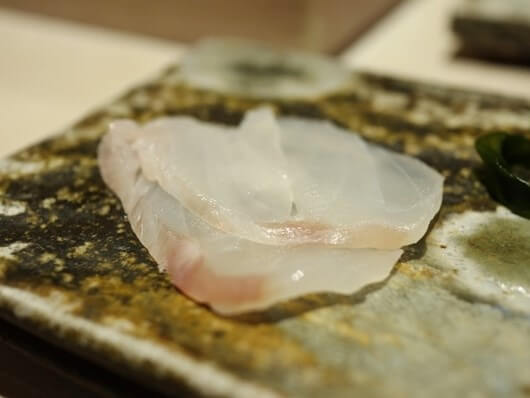
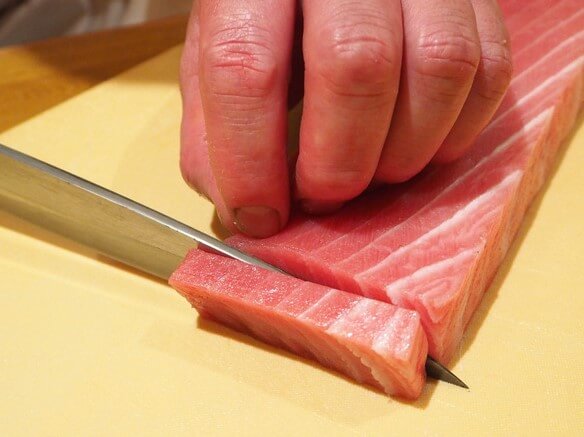
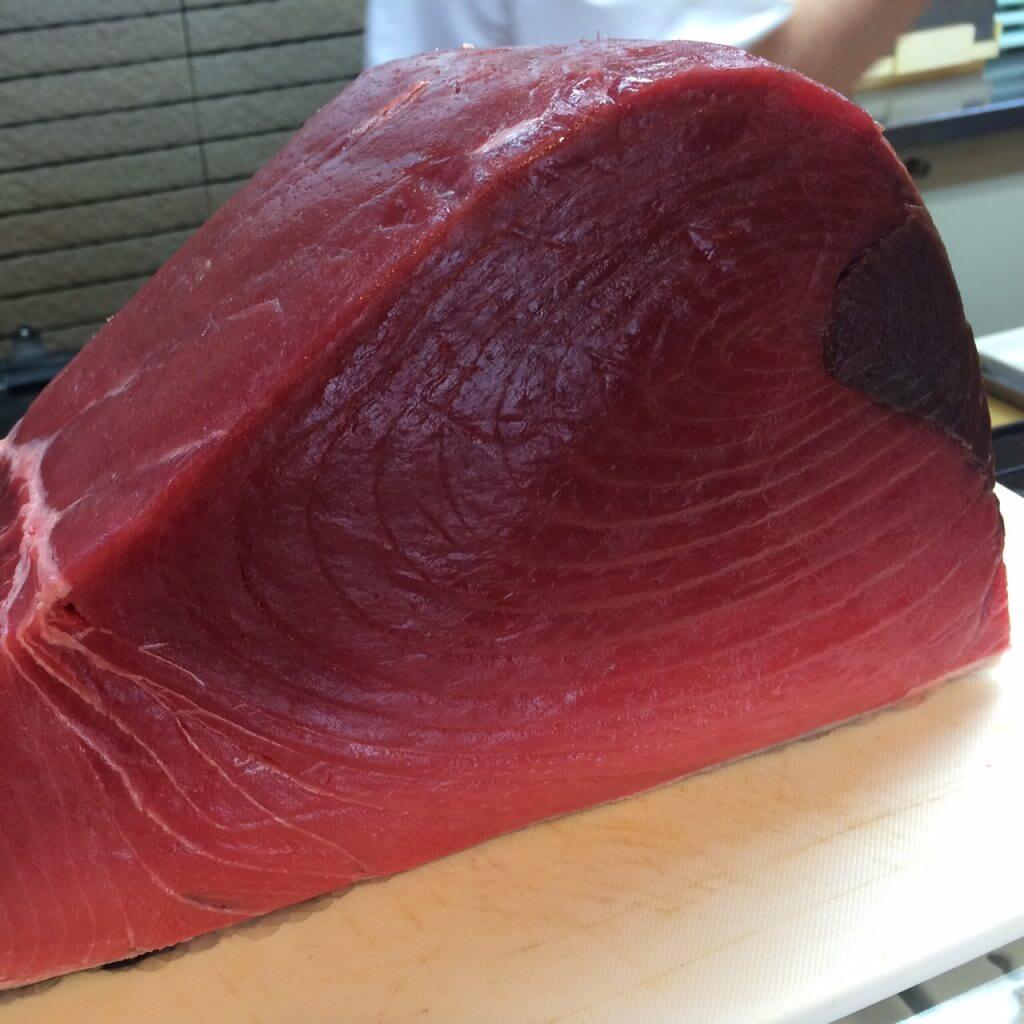 Why is only tuna brought into certain ports high-priced, even though all of the tuna is caught in the seas near Japan? This is because the level of stress caused to the fish when it is caught has a huge impact on the quality, including taste, color and texture. In other words, the same fish may be delicious or taste unpleasant depending on how the fisher handles the fish directly after catching it. Naturally, everyone ends up wanting the fish from the ports with fisherman who are skilled in this practice*. Furthermore, it is individuals who process the fish. The quality changes drastically depending on who caught it.
Why is only tuna brought into certain ports high-priced, even though all of the tuna is caught in the seas near Japan? This is because the level of stress caused to the fish when it is caught has a huge impact on the quality, including taste, color and texture. In other words, the same fish may be delicious or taste unpleasant depending on how the fisher handles the fish directly after catching it. Naturally, everyone ends up wanting the fish from the ports with fisherman who are skilled in this practice*. Furthermore, it is individuals who process the fish. The quality changes drastically depending on who caught it.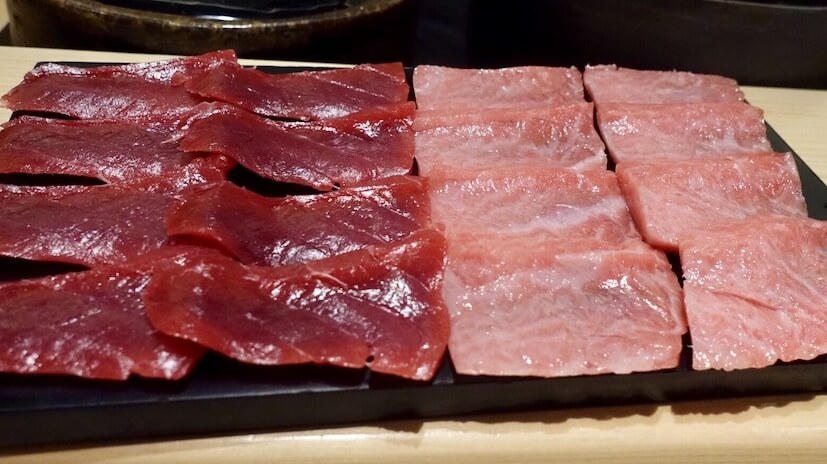 However, sushi chefs will remove the topping from the refrigerator and leave it standing out for a while (in the case of tuna, the fat will melt at around 23℃). They do this because if the topping is cold, it becomes difficult to taste the essential nature of the fish. The temperature of the shari is best at human skin temperature (around 36℃) to maximize the taste and sweetness of the rice. However, the ideal temperature differs very slightly depending on the topping.
However, sushi chefs will remove the topping from the refrigerator and leave it standing out for a while (in the case of tuna, the fat will melt at around 23℃). They do this because if the topping is cold, it becomes difficult to taste the essential nature of the fish. The temperature of the shari is best at human skin temperature (around 36℃) to maximize the taste and sweetness of the rice. However, the ideal temperature differs very slightly depending on the topping.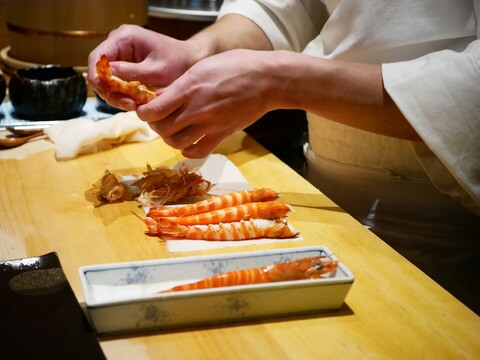 For example, conger eel which is often lightly grilled or prepared in another, similar way, should have a slightly higher temperature (around 42℃) than the shari, and kuruma prawn, which are boiled, should be the same temperature as the shari.
For example, conger eel which is often lightly grilled or prepared in another, similar way, should have a slightly higher temperature (around 42℃) than the shari, and kuruma prawn, which are boiled, should be the same temperature as the shari.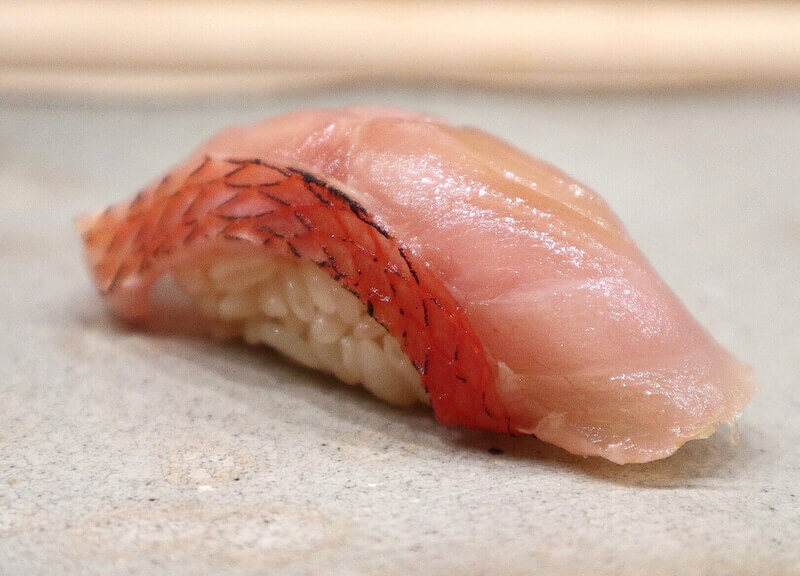 No one is more sensitive to the changing of the seasons than sushi lovers. This must be because the taste of sushi toppings is directly tied to the seasons. There are terms to describe this such as Hashiri (early season), Sakari (in-season) and Nagori (late season), and using these words to understand what state the sushi topping is it allows you to grasp and enjoy the various different flavors. There is nothing that says a sushi topping is less delicious because it has a lower fat content.
No one is more sensitive to the changing of the seasons than sushi lovers. This must be because the taste of sushi toppings is directly tied to the seasons. There are terms to describe this such as Hashiri (early season), Sakari (in-season) and Nagori (late season), and using these words to understand what state the sushi topping is it allows you to grasp and enjoy the various different flavors. There is nothing that says a sushi topping is less delicious because it has a lower fat content.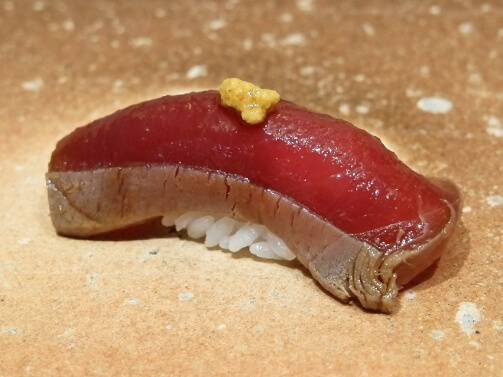 Japanese mustard refers to
Japanese mustard refers to 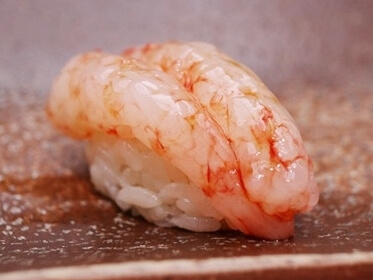 Fish seasons are categorized as the ‘catch season’ and the ‘flavor season’. The ‘catch season’ is the time when lots of fish can be caught and are cheap. Take Japanese Spanish mackerel (Sawara), for example, they approach the coasts during the spring to spawn and this is the peak season. This is the catch season. Once they’re about to spawn and their bodies fatten for winter, we’ve entered the tasting season. However, these seasons differ depending on the region, and may be longer or even happen twice a year.
Fish seasons are categorized as the ‘catch season’ and the ‘flavor season’. The ‘catch season’ is the time when lots of fish can be caught and are cheap. Take Japanese Spanish mackerel (Sawara), for example, they approach the coasts during the spring to spawn and this is the peak season. This is the catch season. Once they’re about to spawn and their bodies fatten for winter, we’ve entered the tasting season. However, these seasons differ depending on the region, and may be longer or even happen twice a year.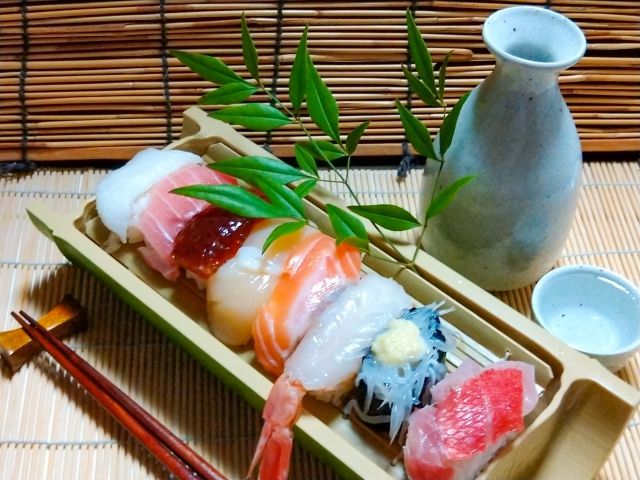
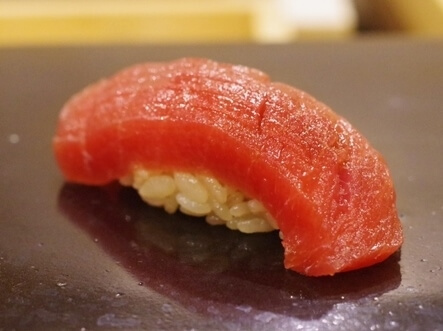 Natural fish are part of the food chain and have concentrations of harmful substances. Since 2000 the amount of mercury found in fish has become an issue. The American Natural Resources Defense Council has said tuna is a fish that should be avoided if pregnant or planning to get pregnant. A more recent problem is the large amounts of micro plastics found in fish meat. This shocking phenomenon will likely be reported by research organizations at some point in time. If it does reach that extreme, then it will be better to avoid the danger of eating fish.
Natural fish are part of the food chain and have concentrations of harmful substances. Since 2000 the amount of mercury found in fish has become an issue. The American Natural Resources Defense Council has said tuna is a fish that should be avoided if pregnant or planning to get pregnant. A more recent problem is the large amounts of micro plastics found in fish meat. This shocking phenomenon will likely be reported by research organizations at some point in time. If it does reach that extreme, then it will be better to avoid the danger of eating fish.